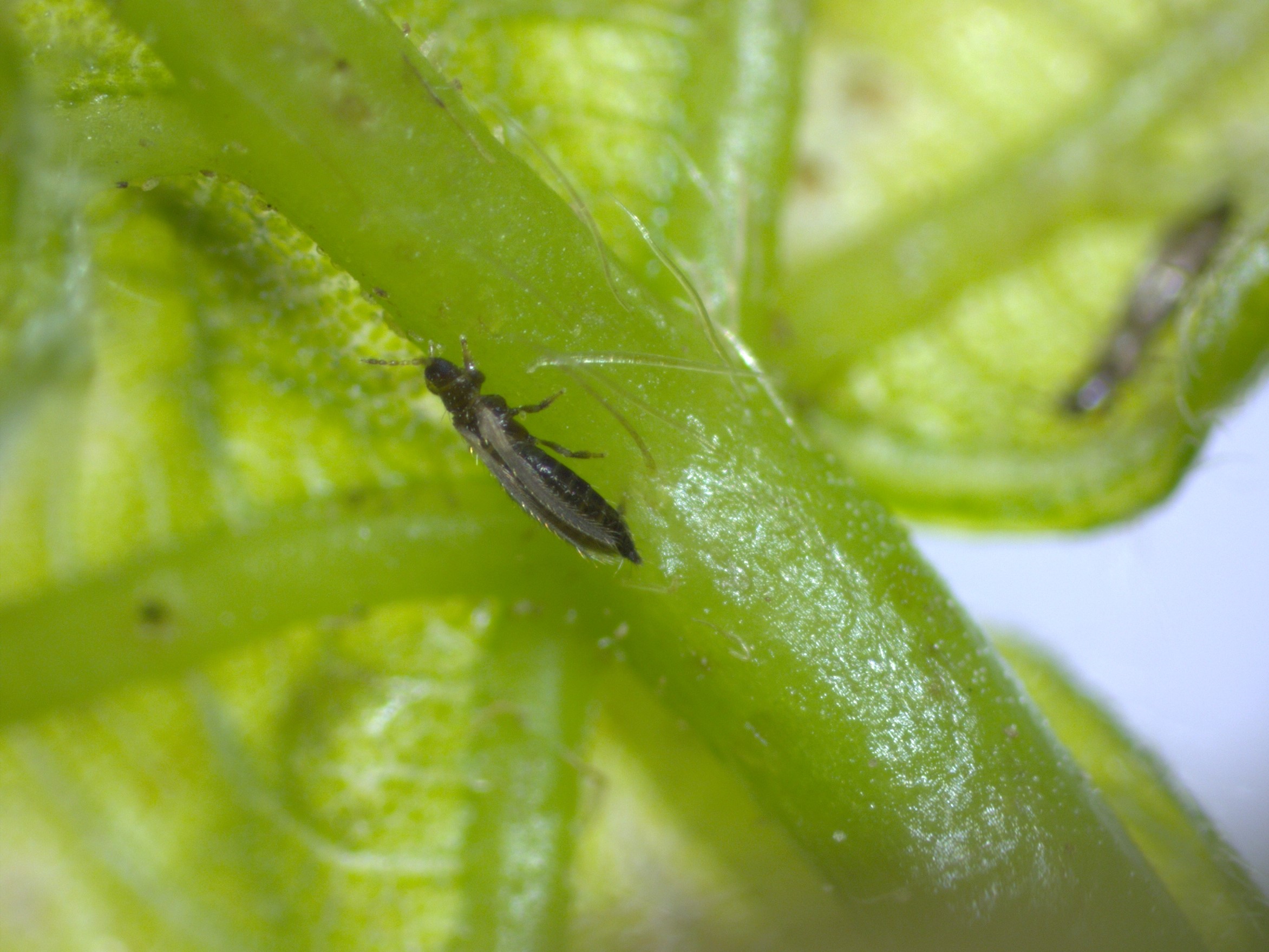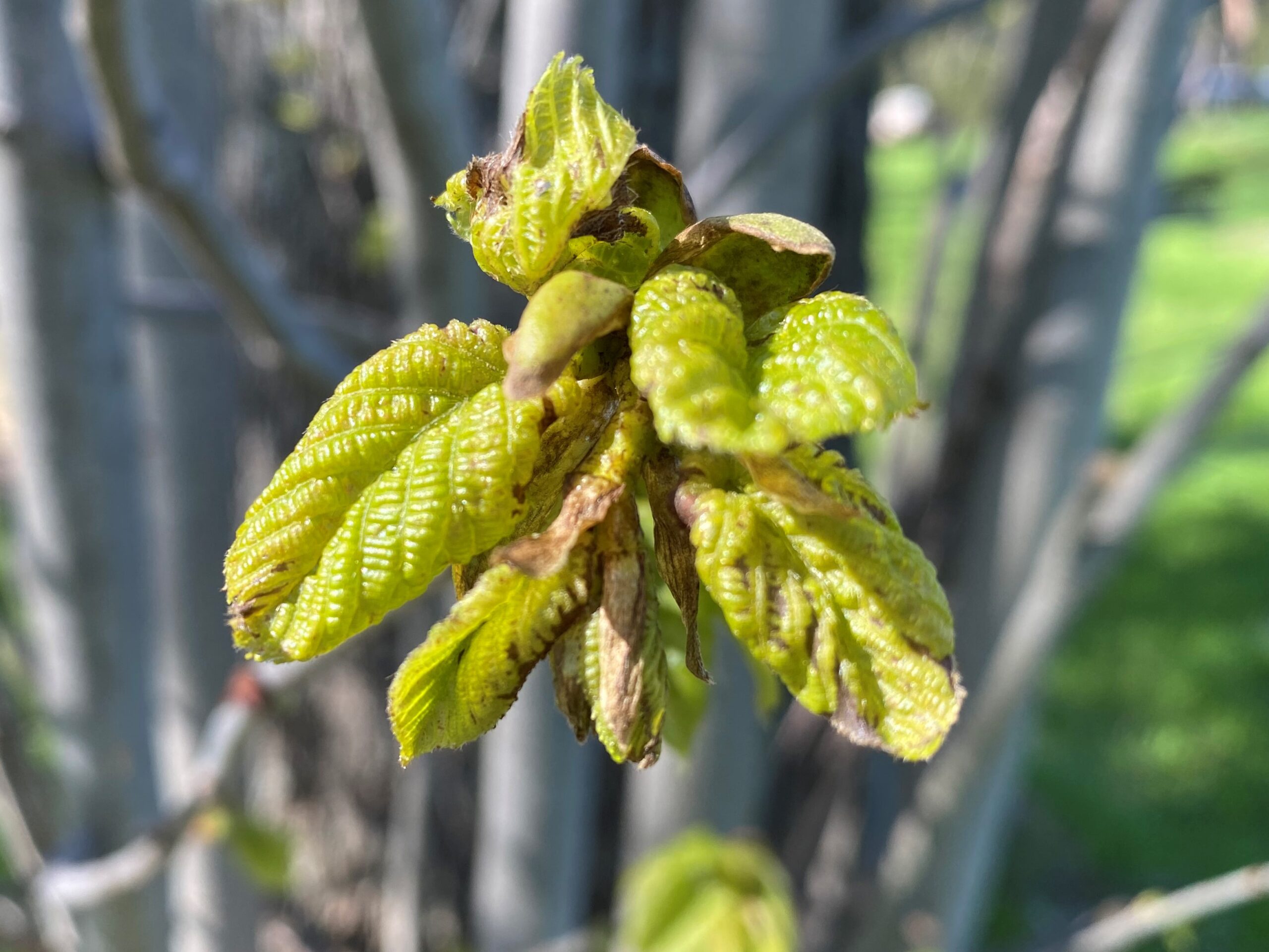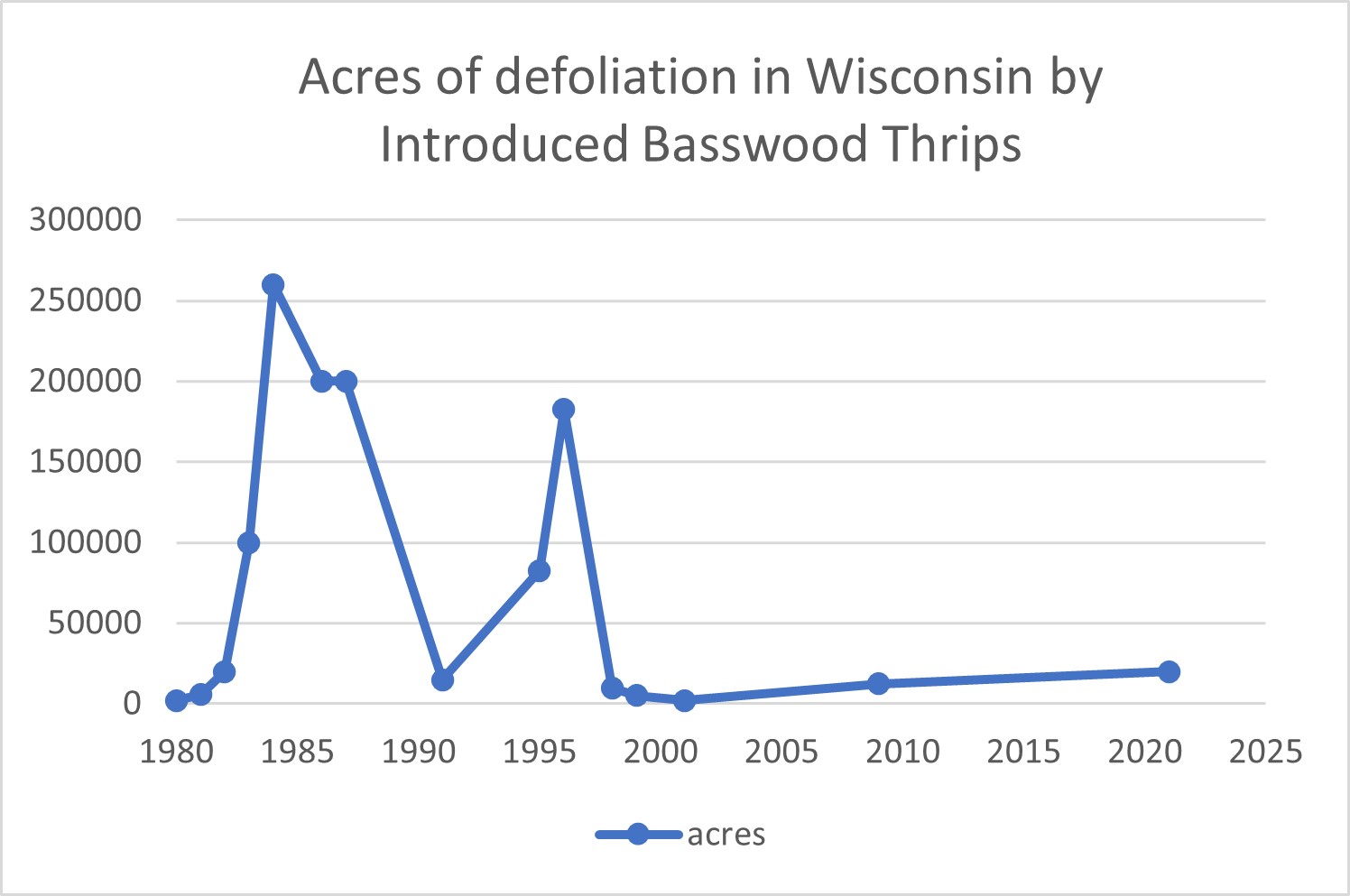By Linda Williams, DNR Forest Health Specialist, Woodruff
Linda.Williams@wisconsin.gov or 920-360-0665.
Introduced basswood thrips are tiny, invasive insects that feed inside tree buds in early spring. Leaves are then deformed when they expand and can look like frost or wind has damaged them.

An adult introduced basswood thrips on the underside of an emerging basswood leaf. This photo is enlarged under a microscope. To the naked eye, they appear as tiny black specks on the underside of the leaf. Photo: Wisconsin DNR
There are also native basswood thrips in Wisconsin, but they feed later in the spring and produce minor damage compared to their non-native counterparts. Interestingly, the native black hunter thrips prey on introduced basswood thrips. This mortality is insignificant to the invasive thrips populations, however.

Newly emerging basswood leaves are damaged by introduced basswood thrips feeding on them. Dead leaf tissue will drop out as the leaves enlarge, leaving holes and causing leaves to be distorted. Photo: Wisconsin DNR.
Basswood trees defoliated by introduced thrips will have tufted foliage and parts of leaves missing. If the damage is severe, trees will attempt to send out a second set of leaves. Many consecutive years of severe damage (and re-foliation) can weaken and kill a tree. If the tree survives, recovery can take many years, and they may still die from secondary issues like armillaria root rot.
Moderate to severe thrips damage was first observed on basswood in Wisconsin in 1980, but the damage was incorrectly attributed to our native thrips. Additional research identified the culprit as an exotic thrips species, the introduced basswood thrips (Thrips calcaratus).
Since identification, the invasive thrips population has gone from very high numbers, which causes severe damage and decline in trees, to 20 years of low populations with very little damage. Then in 2020, damage from introduced basswood thrips was noted in Forest, Marinette and Oconto counties. In 2021, severe damage was noted in Rusk and Sawyer counties in northwestern Wisconsin and in Florence, Forest, Marinette and Oneida counties in northeastern Wisconsin.
High populations have already been observed in Forest and Oconto counties this year.
There is only one thrips generation per year, so by the time defoliation is noticeable, the damage is done. Therefore, pesticides would have no impact.
Instead, landowners should try to minimize stress on damaged stands and keep trees healthy during outbreaks. This will help trees tolerate defoliation and have the energy to send out a second set of leaves.

